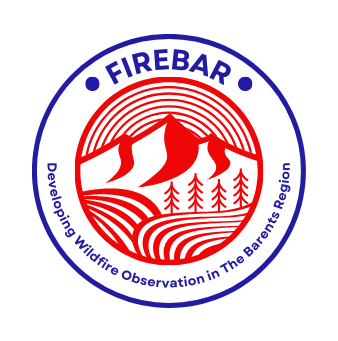
FIREBAR – Developing wildfire observation in the Barents Region
Wildfires in the Nordic countries are expected to become more common as a result of climate change. Although the number of wildfire sightings in Finland, for example, is trending down, the size of fires is increasing. Dry ground generally increases the risk of wildfires, but on the other hand, wildfires also occur outside periods of drought.
Finland, Sweden and Norway have historically differed in structure and operating culture in organising wildfire detection. The goals, scope and targets of detection activities have varied in each country. Cooperation between the countries has been localised and situational and fo-cused on rescue operations, not detection.
The project FIREBAR strengthens the performance of aerial detection systems in combatting wildfires and improves cooperation between national rescue authorities.
The aims of the project
- Develop aerial observation of wildfires in the Barents region
- Improves cooperation between national rescue authorities
- Gather lessons learned and practices in knowledge transfer between the three countries
- Create an operational model for international cooperation in aerial wildfire observation
The project will make use of the Host Nation Support action cards
The project will make use of the Host Nation Support (HNS) action cards produced and used in previous projects and develop them further in issues related to aerial observation. The project will provide new data on the use of wildfire detection systems, data collection and analysis methods as well as artificial intelligence applications and unmanned aerial vehicles in wildfire detection.
The wider use of technology will ensure the continuity of location-independent wildfire observa-tion in the future. This way, in the future, detection activities can be increasingly focused ac-cording to actual needs and anticipated risks, rather than being tied to existing resources or infrastructure. When used correctly, aerial detection systems diversify and enhance the effec-tiveness of rescue operations. Developing these capabilities is essential to ensure that wild-fires can be detected as quickly as possible.
The output consists of a comparison of the three countries’ overall systems and practical arrangements
The project explores the applicability of systems and technological solutions used in different countries. The output consists of a comparison of the three countries’ overall systems, wildfire observation, weather data analysis, wildfire fuel calculations and wildfire risk assessment, per-sonnel resources and equipment, contracts and legislation and other practical arrangements.
The project is coordinated by The Finnish National Rescue Association (SPEK) and will run until 29 February 2024. The project is funded by the Ministry for Foreign Affairs in Finland (IBA funding).
Project partners
- Suomen Lentopelastusseura
- Pohjois-Suomen Aluehallintovirasto
- Nordland Fylkeskommune
- Tromssan ja Finmarkun fylkinkomuuni
- Norges Luftsportforbund
- Direktoratet for samfunnssikkerhet og beredskap
- Länsstyrelsen Norrbotten
- Länsstyrelsen Västerbotten
- Frivilliga Flygkåren
- Myndigheten för samhällsskydd och beredskap
Project report
The final report of the FIRBAR research project investigates aerial wildfire observation methods within the Barents region, focusing on Finland, Sweden, and Norway, and improves cooperation between national rescue authorities.
According to the report, forest fire surveillance via manned aircraft remains is an established method for detecting wildfires in Finland, Sweden, and Norway. Cooperation between these countries is necessary, as the risk of wildfires is expected to increase in the Nordic countries due to climate change.

